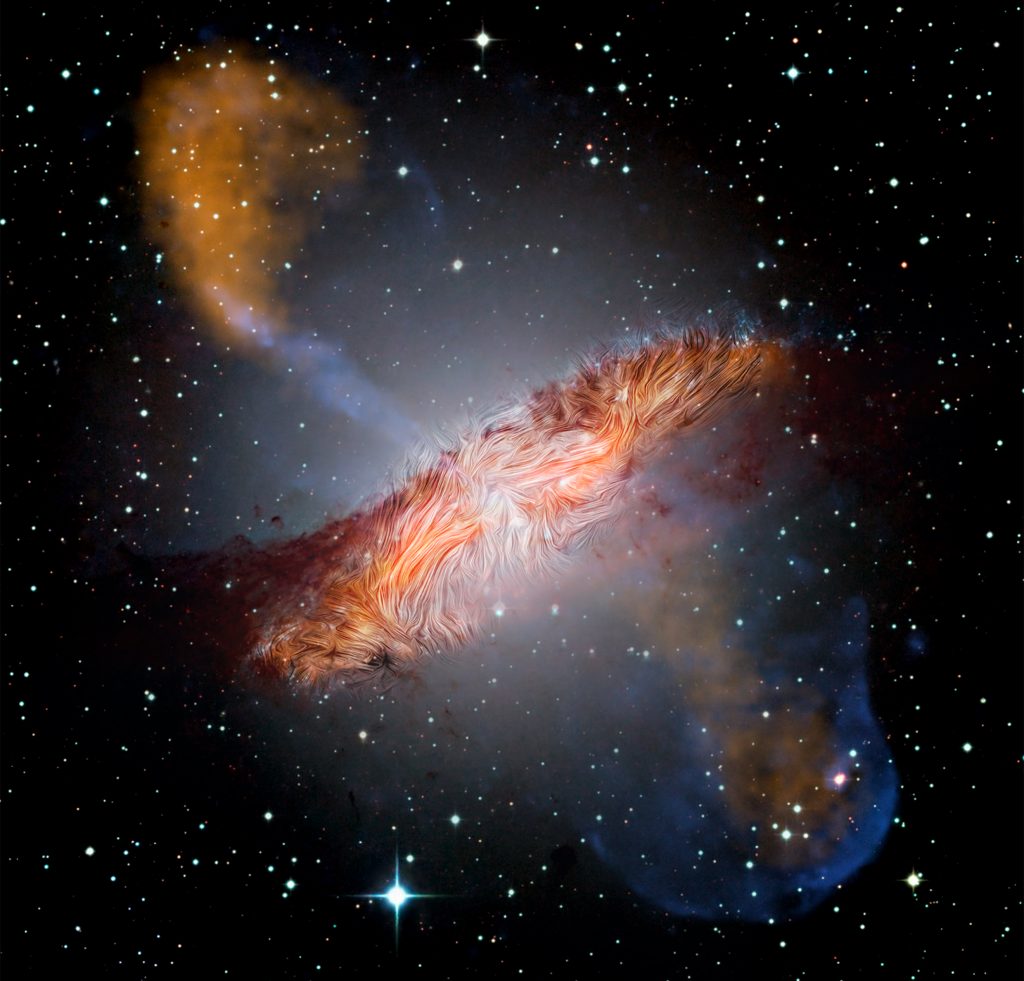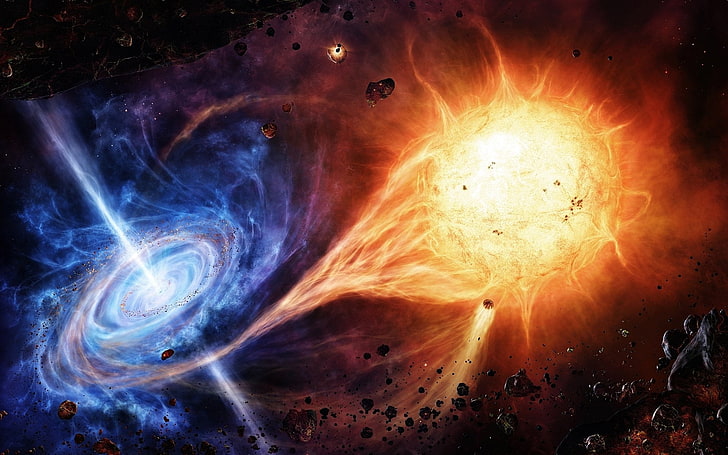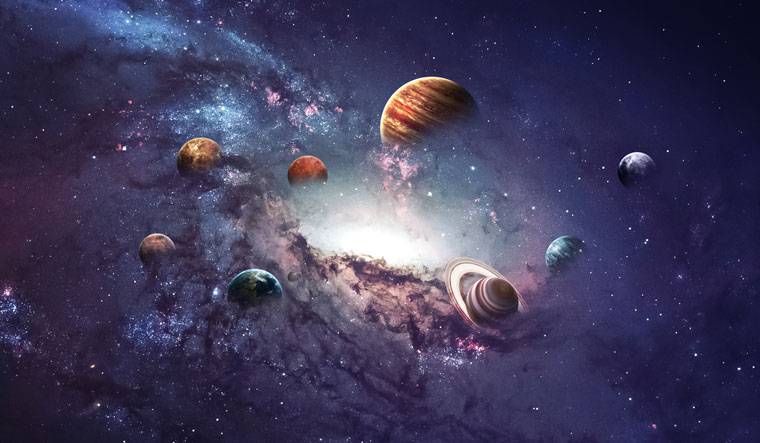The Cosmic Tapestry: Threads of Attraction Weaving the Universe
Gravity’s Grand Symphony: Harmonizing the Cosmos
“Cosmic Connections: The Intriguing Magnetism of Universal Attraction” draws us into a cosmic symphony where the harmony of forces orchestrates the dance of celestial bodies. Amidst this grand symphony, gravity emerges as the conductor, weaving intricate melodies that govern the motion of galaxies, stars, and planets.

The symphony begins with the birth of stars, a process fueled by the interplay between gravity and other forces. Nebulas, vast clouds of gas and dust, are sculpted by gravity’s hand, compressing matter into dense cores. These cores ignite into stars, igniting nuclear fusion that fuels their luminous existence. Gravity’s subtle pull counterbalances the outward pressure generated by the fusion, creating a harmonious equilibrium that sustains the star’s brilliance for millions to billions of years.
As stars age and exhaust their nuclear fuel, gravity once again steps to the forefront, orchestrating their final movements. Massive stars, in a stunning crescendo, undergo supernova explosions that release an incredible amount of energy. These cataclysmic events forge elements essential for the formation of new stars and planets, further enriching the cosmic composition.
Yet, even the most massive of stars must bow to gravity’s inexorable pull. Black holes, the remnants of these titanic explosions, stand as cosmic maestros, possessing gravitational fields so intense that they bend the very fabric of spacetime. These gravitational behemoths produce gravitational waves, ripples that propagate through the universe, carrying with them the echoes of cosmic events.
The universe, as we perceive it, is a symphony of interwoven forces, with gravity playing a leading role in orchestrating this celestial ballet. Just as a composer crafts a masterpiece with various instruments, the cosmos weaves its intricate tapestry through the delicate interplay of gravitational forces.
A Dance with Destiny: Gravity and the Fate of Stars
Imagine stars as celestial dancers, swaying to the rhythm of gravity’s music. “Cosmic Connections” leads us on an exploration of the intimate relationship between gravity and stars, revealing how this attraction shapes their lives from birth to death.
At the heart of this cosmic dance lies stellar formation. The interplay between gravity, outward pressure, and the internal heat generated by nuclear fusion results in the birth of stars. Nebulas, vast clouds of gas and dust, collapse under the pull of gravity, igniting nuclear reactions that sustain stars for millions to billions of years. Understanding this process allows us to comprehend the vast variety of stars, from the luminous giants to the dim dwarfs, each a unique expression of gravity’s influence.
However, the dance doesn’t end with birth. Stars reach their final act in a blaze of glory or a gentle fade, driven by the balance between gravity’s pull and the forces counteracting it. For massive stars, the pull becomes overpowering, leading to cataclysmic supernova explosions that scatter elements forged in their cores across space. Neutron stars and pulsars, the remnants of these dramatic deaths, are a testament to the extreme forces gravity can unleash.
As we look even further into the universe, we encounter binary star systems – pairs of stars engaged in a gravitational dance that spans billions of years. These systems offer insights into the lives of stars, as their interactions reveal secrets about their masses, ages, and evolutionary paths.
The Cosmic Dance: Gravity’s Enchanting Waltz
In the cosmic dance of “Cosmic Connections,” gravity emerges as a captivating partner, leading stars and galaxies in an enchanting waltz across the vast expanse of space. This dance of attraction is not confined to individual celestial bodies; it extends its influence to vast cosmic structures that span billions of light-years.
Galaxy clusters, the largest structures in the universe, are captivating examples of gravity’s influence on a cosmic scale. Comprising numerous galaxies bound by gravity, these clusters create immense gravitational wells that shape the paths of light itself. The phenomenon of gravitational lensing, a gravitational bending of light, allows us to glimpse distant objects that would otherwise remain hidden behind cosmic veils.
The cosmic dance also extends to the realm of cosmic filaments – immense, thread-like structures that span the universe, weaving galaxies together in an intricate web. These filaments serve as the bridges connecting galaxies, guided by gravity’s invisible hand. The dance of galaxies along these cosmic threads reveals the underlying structure of the universe, illuminating the profound connections woven by the force of attraction.
Beyond galaxies, gravity’s dance touches every corner of space-time. Planetary orbits, moon phases, and even the rhythmic tides on Earth are manifestations of gravity’s influence. The symphony of attraction resonates across scales, from the microcosmic dance of subatomic particles to the grand cosmic ballet of galaxies.
Unveiling the Dark Enigma: Gravity and the Cosmos Beyond
“Cosmic Connections” has guided us through the visible cosmos, but the universe remains veiled in a cloak of darkness. Dark matter and dark energy, two enigmatic components that defy direct detection, embody gravity’s influence in realms we are only beginning to comprehend.
Dark matter, a form of matter that doesn’t interact with light, has been inferred through its gravitational effects on visible matter. Its presence is crucial in explaining the behavior of galaxies and galaxy clusters, yet its true nature remains elusive. Efforts to detect dark matter particles have thus far yielded no direct evidence, leaving scientists with a puzzle that sparks innovative ideas and collaborations.
On the other hand, dark energy, a mysterious repulsive force, is driving the universe’s accelerated expansion. Einstein’s cosmological constant, once discarded as a blunder, has found new relevance as a potential explanation for this expansion. The interplay between dark energy and gravity is shaping the universe’s destiny, determining whether it will continue to expand indefinitely or eventually contract.
These unseen cosmic actors exemplify the profound nature of gravity’s influence. They challenge us to reconsider the fabric of reality and the extent to which our current understanding of gravity can explain the universe’s intricacies. Through experiments and observations, we strive to unveil the secrets of these hidden forces and their role in shaping the cosmos.

Unveiling the Hidden: Dark Matter and Dark Energy
While “Cosmic Connections” illuminates the visible aspects of the universe, it also beckons us to explore the hidden realms governed by gravity. Dark matter and dark energy, two enigmatic entities, hold a mysterious sway over the cosmic landscape, revealing gravity’s influence in uncharted territories.
Dark matter, although elusive, exerts a gravitational force that shapes the evolution of galaxies and galaxy clusters. Its nature remains shrouded in mystery, inviting physicists to seek its identity and role in the cosmos. Numerous experiments and observations are dedicated to unmasking this hidden force, aiming to unveil its nature and significance.
Dark energy, a more recent discovery, challenges our understanding of gravity’s role in the universe’s expansion. This repulsive force counteracts gravity, causing the universe to accelerate its expansion. Einstein’s cosmological constant, once introduced as a fudge factor, now emerges as a potential explanation for this enigmatic phenomenon. The interplay between dark energy and gravity’s pull paints a complex picture of the cosmos’s evolution.
These dark components serve as a reminder that while we marvel at the visible universe, gravity’s influence extends far beyond what meets the eye. As we unravel their mysteries, we deepen our comprehension of the cosmic connections woven by the force of attraction.
The Unifying Threads: Seeking Harmony in Cosmic Forces
“Cosmic Connections” has guided us on a voyage of discovery, unveiling the intricate tapestry woven by gravity’s unseen hands. This journey, however, has also led us to the doorstep of a fundamental question: Can gravity be unified with other forces to form a coherent theory of everything?
This aspiration for unity has given rise to ambitious theories that seek to harmonize the laws governing the cosmos. String theory, a candidate for a unified theory, posits that fundamental particles are not points but tiny strings that vibrate, producing the diverse particles observed in nature. String theory’s framework unites the forces of nature, including gravity, into a single mathematical framework, potentially unlocking the secrets of the universe’s hidden unity.
Loop quantum gravity, another contender, takes a different approach, attempting to reconcile the principles of quantum mechanics with gravity’s influence. It envisions space-time as discrete, quantized units, offering an alternate perspective on the universe’s fabric.
“Cosmic Connections” beckons us to contemplate the very essence of reality, inspiring collaboration between physicists, mathematicians, and cosmologists. While these theories remain speculative, they embody humanity’s thirst for understanding and the profound impact of gravity on the universe’s symphony.
Beyond the Horizon: Gravity’s Quest for Unity
“Cosmic Connections” has led us through the labyrinth of gravity’s influence, from the intricate choreography of galaxies to the mysterious dance of dark matter and dark energy. As we journey deeper into the heart of the cosmos, we encounter the quest for unity – the aspiration to unify gravity with other fundamental forces in a single, elegant framework.
String theory, a leading contender in the quest for a unified theory, suggests that particles are not point-like entities, but rather minuscule strings that vibrate at different frequencies. These vibrations give rise to the diverse particles that constitute the universe. String theory proposes a harmonious union of all fundamental forces, including gravity, offering a glimpse into the cosmos’s underlying symphony.
Loop quantum gravity, another avenue of exploration, seeks to merge the principles of quantum mechanics with gravity’s influence. It envisions spacetime as a discrete network of interconnected loops, offering an alternative perspective on the universe’s fabric. The dance between these loops echoes the cosmic rhythm of attraction.
“Cosmic Connections” is a testament to humanity’s drive to explore the intricacies of the universe’s symphony. As we endeavor to unify the fundamental forces, we delve into the very essence of reality, seeking to reveal the harmonious threads that weave through the cosmos. In this cosmic endeavor, we forge connections not only between physical forces but also between the human spirit and the mysteries of the universe.
In closing, “Cosmic Connections: The Intriguing Magnetism of Universal Attraction” has led us through the intricacies of gravity’s influence, from its role in shaping galaxies to its intimate connection with stars and its enigmatic dance with the unseen. As we continue our exploration of the cosmos, we find ourselves standing on the threshold of discovery, poised to reveal the deepest truths of the universe’s hidden forces.
